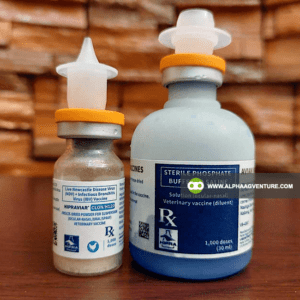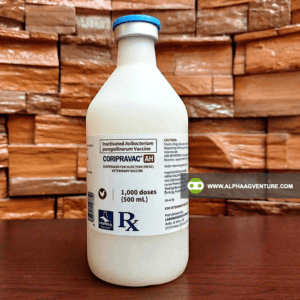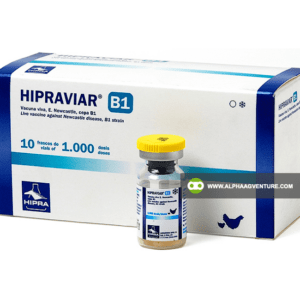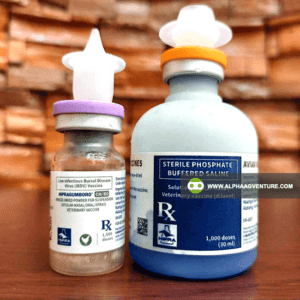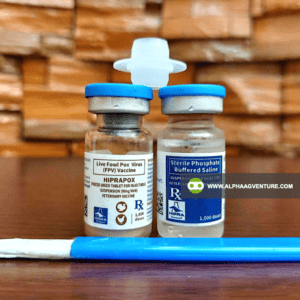The Cost of Coryza in Filipino Poultry Farms
I’ve lost chickens to Coryza. You probably have too. And if you haven’t yet, I envy you—but I also worry for you. Because in the poultry game here in the Philippines, Avibacterium paragallinarum doesn’t knock. It just walks in.
I remember one particular outbreak in a friend’s layer farm in Central Luzon. He thought it was just “sipon” (a cold). A few sniffles. Some swollen faces. No big deal, right? Within a week, his hens dropped from 92% lay to under 40%. The stink alone from the nasal discharges made it hard to breathe inside the poultry house. And the heartbreak? Worse than the financial loss.
That’s when it hit me: Coryza isn’t just a health issue. It’s a cashflow killer. A reputation breaker. And sometimes, even a career ender. Especially when it hits just before your market-ready pullets start laying—or right after you’ve invested in new breeds or vaccines like Newcastle Disease or Fowl Pox.
What hurts even more? It’s preventable.
I don’t say that lightly. I’ve made my fair share of mistakes. But I’ve also learned a few things the hard way. And now, I want to ask you something: Have you ever lost an entire batch of layers to what you thought was just “ordinary sipon”?
If you have, you know the pain. If you haven’t, then this conversation might just save your flock.
Understanding Coryza: It’s Not Just a Sipon
I used to lump all respiratory issues in chickens under one mental folder: “trangkaso ng manok” (chicken flu). But that thinking cost me—not just in terms of birds, but in credibility with buyers and fellow growers. Coryza has a way of masquerading as the common cold, but trust me, it’s far from ordinary.
Coryza is caused by Avibacterium paragallinarum, a Gram-negative bacterium that thrives in poorly ventilated, humid environments—yes, basically our entire archipelago during tag-ulan (rainy season). Transmission is fast. Direct bird-to-bird contact, contaminated equipment, even your own boots can become vectors. I’ve seen it spread in a flock in less than 48 hours.
Clinical signs? You’ll notice facial swelling, particularly around the eyes and wattles. Foul-smelling nasal discharge. Conjunctivitis. Rales. And that weird thing where birds huddle in corners with their eyes closed as if they’re praying for mercy. But here’s the tricky part: those symptoms overlap with Newcastle Disease, Fowl Cholera, Infectious Bronchitis, and even Mycoplasma infections.
That’s why misdiagnosis is common, especially when people rely solely on visual signs. I always tell clients: get a proper lab confirmation if you can. But if you’re in a remote area, at least compare patterns. Coryza rarely comes with diarrhea. Gumboro does. ND usually starts with greenish droppings and progresses with nervous signs. Fowl Cholera often hits harder and faster.
So here’s my question for you: How do you differentiate Coryza from the rest of the respiratory gang?
Are you trusting your gut, or are you testing?
Because in this line of work, “akala ko” (I thought) is an expensive phrase.
The Real Enemy: Poor Biosecurity
If there’s one thing I’ve learned in poultry farming, it’s this: the bacteria don’t take shortcuts—but we do. And every shortcut we take in biosecurity gives Coryza a VIP pass to the poultry house.
I’ve been to farms where the gate is always open, the same wheelbarrow goes from compost pit to brooder, and the farmhand’s slippers make more rounds than the delivery van. Sound familiar? These aren’t just small oversights. They’re disease highways. Coryza isn’t airborne over long distances, but once it’s in the vicinity, all it takes is one bird-to-bird handshake—or more realistically, one shared waterer or feeder—and you’re in trouble.
Here’s what I tell clients during consultations:
- Footbaths dry and sun-baked? Might as well post a “Welcome, Avibacterium!” sign.
- Same crew for multiple age groups? You’re mixing vulnerable growers with hardened carriers.
- No quarantine for new arrivals? That’s like moving in with someone you just met at the bus terminal.
In the Philippine setup, especially with backyard operations scaling up, biosecurity often takes a backseat to practicality. But believe me, the cost of prevention is always cheaper than the cost of treatment—or worse, the cost of culling.
You don’t need a high-tech system. Sometimes, all it takes is a footbath, a strict movement protocol, and a few stern reminders to your staff.
So let me ask you: Does your farm follow a strict in-and-out policy, or is it more like a public market?
Be honest. Because Coryza isn’t sentimental. It doesn’t care if you’re short on staff or just trying to save time.
Vaccination: Your Best Weapon Against Coryza
I don’t like firefighting anymore. When Coryza first hit my flock years ago, I scrambled for antibiotics, vitamins, steam therapy—you name it. But the best defense I’ve learned since then isn’t a stronger antibiotic. It’s a well-timed vaccine.
Let me be clear: Coryza vaccines aren’t miracle shields. They don’t stop infection 100%, but they reduce the severity, minimize egg drop, and most importantly, cut transmission rates dramatically. In farms where I’ve advised regular vaccinations, Coryza rarely becomes a showstopper.
Here in the Philippines, I recommend vaccinating pullets 3 months of age, with a booster 6 months later. This gives you solid protection by the time they enter lay. In multi-age farms, I always ask: are you vaccinating your replacement stocks? Or are you setting them up as sacrificial lambs?
I often pair Coryza vaccines with our Newcastle Disease Lasota + IB combo and Fowl Pox vaccines, depending on your program. It’s not just about Coryza prevention—it’s about making sure the birds are ready to face the respiratory cocktail that circulates in most Philippine poultry zones.
Timing is key. If you’re in an area where Coryza is endemic, I suggest you don’t wait for clinical signs. Vaccinate early and consistently. The cost of vaccination is a rounding error compared to the economic losses during an outbreak.
Is your flock vaccinated, or are you gambling with every batch?
You don’t need a fortune teller. Just a proper schedule.
Environmental Management: Winning the Long Game
If you’ve ever walked into a poorly ventilated poultry house at noon and felt like you were entering a sauna with feathers and feces, you know exactly what I mean when I say: Coryza loves bad air.
I’ve seen farms with world-class genetics and top-tier vaccines still struggle with Coryza. Why? Because the air is stagnant, the litter is soaked, and ammonia levels are high enough to knock out a grown man. Vaccines can only do so much if your environment is working against you.
Here in the Philippines, where heat and humidity gang up on us for most of the year, environmental management isn’t optional—it’s survival.
Here’s what I check during farm consults:
- Ventilation: Are you getting enough air movement without creating a wind tunnel? Even in enclosed houses, negative pressure systems or well-placed exhaust fans can help.
- Litter Management: Dry bedding is your first line of defense. Wet litter becomes a petri dish not just for Coryza, but also E. coli and Clostridium.
- Stocking Density: Are your birds cramped like commuters in MRT rush hour? Overcrowding weakens immunity, spreads disease faster, and stresses birds out.
A lot of folks invest heavily in genetics and vaccines but forget that mga manok din ‘yan, hindi makina (they’re chickens, not machines). They respond to stress, to heat, to poor air.
So here’s something for you to reflect on: When was the last time you measured ammonia levels inside your poultry house?
If you can smell it, it’s already too high. And Coryza? It’s just waiting for the right environment to strike.
Integrated Prevention Plan: Coryza Doesn’t Stand a Chance
I’ve had growers tell me, “Sir, vaccinated na pero may Coryza pa rin!” And every time, I say: “Ano ang ventilation ninyo? May quarantine ba kayo? May footbath?” (How’s your ventilation? Do you quarantine? Do you even use a footbath?) Because preventing Coryza is like raising chickens—it takes more than one egg to hatch a plan.
Here’s what I personally use and recommend to clients:
1. Biosecurity First
- Dedicated clothing per house
- Disinfection protocols after each age group visit
- Quarantine new stocks for 2 weeks minimum
2. Vaccination Program
- Coryza vaccine at 3 months + booster 6 months
- Combine with Newcastle Lasota + IB or Newcastle CLON/H120, Gumboro, and Fowl Pox where needed
- Don’t skip boosters—immunity wanes faster in tropical stress conditions
3. Environmental Controls
- Clean, dry litter always
- Maintain optimal stocking density (no more than 6–8 birds/m² for layers)
- Ensure consistent airflow—open-sided or tunnel-ventilated systems
I always remind clients during consults: these three don’t work alone. One without the other two is like having a roof with no walls. You’ll still get soaked when the storms hit—which, by the way, in the poultry world, means Coryza, ND, Fowl Pox, and the rest of the respiratory crew.
So, tell me: Which part of your system do you think is your weakest link?
Because Coryza only needs one open door to make itself at home.
A Case for Consultation: When Prevention Isn’t Enough
At this point, if you’ve followed all the steps—good biosecurity, the right vaccination schedule, and proper environmental management—but you’re still seeing signs of Coryza, then it’s time to bring in a professional. And no, I’m not just saying that to make my job look good. There are instances when even the best plans don’t stop disease from slipping through the cracks.
I’ve had clients call me in a panic after seeing just a few signs of respiratory distress in their flock. And, yes, I’ve been the person who helped them keep a small problem from turning into a major disaster. It’s always easier to manage an issue early on, especially with something as sneaky as Coryza.
This is where my consultation service comes in. I can analyze your setup, pinpoint weaknesses, and provide real-time solutions. It’s not about being the hero of the farm (well, maybe a little), it’s about ensuring that you don’t lose your hard-earned money, reputation, and health of your flock.
Sometimes, all it takes is a small tweak—a change in ventilation, adjusting stocking density, or switching up your vaccine timing—and the situation can go from critical to manageable.
Have you ever felt overwhelmed by disease outbreaks and wished you had someone to walk you through it?
Trust me, it’s never too late to ask for help. And in the world of poultry farming, early intervention often means avoiding a catastrophe.
Prevention Is Key – But I’m Here When You Need Me
At the end of the day, Coryza doesn’t have to be a farm-ending disaster. By sticking to a comprehensive plan—strong biosecurity, regular vaccinations, and solid environmental management—you can keep this troublesome disease at bay. But just like with any disease, sometimes even the best-laid plans don’t work, and that’s where the right advice and intervention come in.
That’s where I come in. As I always tell my clients: prevention is great, but it’s not perfect. When things go sideways, you need someone who’s been there before to help you steer the ship back on course. Whether it’s a consultation about your current practices or a full review of your farm setup, I’m here to help.
And before I go—let me leave you with this: You’re only as good as your last batch of chickens. I know it sounds harsh, but if you’re serious about poultry farming, it’s the reality. Consistency in preventing diseases like Coryza is what separates the amateurs from the professionals. If you want to stay at the top of your game, you have to keep learning and adapting. That’s why I’ve also created my Chicken Farming Seminar, so you can get more in-depth insights from my experience.
So, to wrap it up: Are you ready to level up your poultry game?
Or are you going to wait until Coryza knocks at your door?
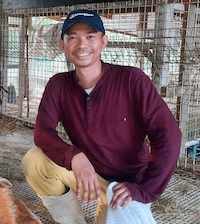
Mr. Jaycee de Guzman is a self-taught agriculturist and the founder and patriarch of Alpha Agventure Farms, recognized as the leading backyard farm in the Philippines. With a rich background in livestock farming dating back to the early 1990s, Mr. de Guzman combines his expertise in agriculture with over 20 years of experience in computer science, digital marketing, and finance. His diverse skill set and leadership have been instrumental in the success of Alpha Agventure Farms.



